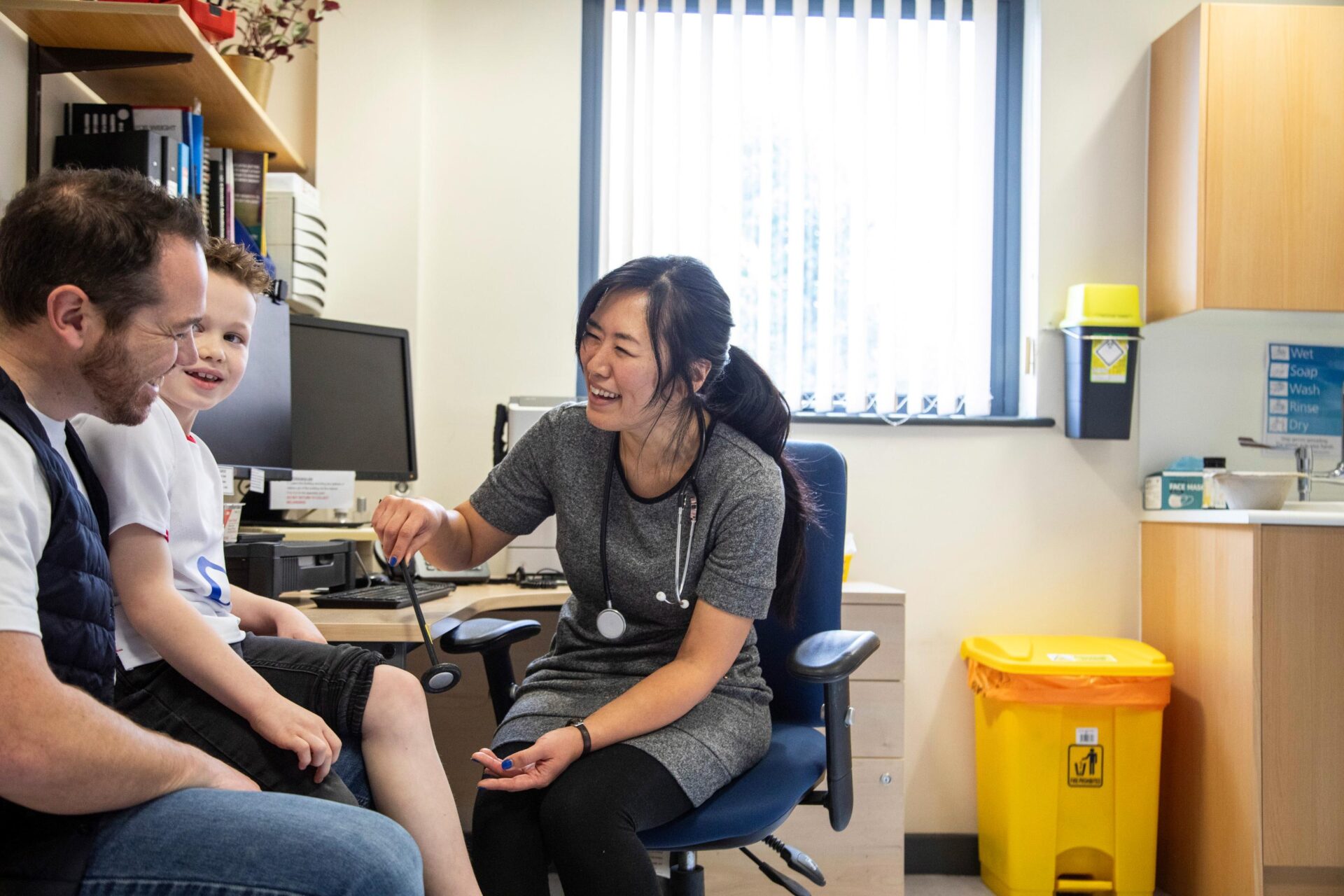Are you tired of the traditional healthcare system that often focuses on treating illnesses rather than preventing them?
Direct primary care offers a refreshing alternative where prevention takes center stage.
By implementing a range of effective strategies, direct primary care enhances prevention and empowers individuals to take control of their health.
From early intervention to collaborative care, this approach prioritizes comprehensive health assessments, personalized treatment plans, patient education, and lifestyle changes.
But that’s not all.
There are even more strategies that will be revealed, strategies that have the potential to revolutionize healthcare as we know it.
So, are you ready to discover the seven best strategies that direct primary care offers to enhance prevention?
Early Intervention
In the realm of direct primary care, early intervention plays a crucial role in proactively addressing potential health concerns before they escalate. By implementing preventive measures and offering proactive healthcare, direct primary care providers prioritize your well-being and aim to keep you healthy and thriving.
One of the key advantages of direct primary care is the ability to detect health issues at an early stage. Through regular check-ups and comprehensive screenings, your primary care provider can identify potential concerns before they become major problems. This proactive approach allows for timely intervention, improving the effectiveness of treatment and increasing the likelihood of successful outcomes.
Early intervention also enables your healthcare team to educate you about preventive measures specific to your needs. They can provide guidance on healthy lifestyle choices, such as proper nutrition and exercise, as well as recommend screenings and vaccinations to protect against common illnesses. By empowering you with knowledge and equipping you with the tools to take charge of your health, direct primary care fosters a sense of belonging and partnership in your healthcare journey.
Moreover, early intervention in direct primary care helps minimize healthcare costs in the long run. By addressing potential health concerns early on, costly medical interventions and hospitalizations can often be avoided. Instead, the focus remains on prevention and early treatment, reducing the financial burden on both you and the healthcare system.
Comprehensive Health Assessments
To ensure a thorough understanding of your overall health, direct primary care providers conduct comprehensive health assessments. These assessments are an essential part of prevention strategies and help identify potential health issues before they become major concerns. Through a series of health screenings and evaluations, your provider will gather important information about your current health status and any potential risk factors.
Comprehensive health assessments typically include a variety of tests and evaluations. These may include measurements of your blood pressure, cholesterol levels, and body mass index (BMI). Your provider may also assess your lifestyle habits, such as diet and exercise, to identify areas for improvement. In addition, they may ask about your family medical history, as certain conditions can be hereditary.
Health screenings are an important component of comprehensive health assessments. These screenings can detect early signs of diseases like cancer, diabetes, and heart disease. By identifying these conditions early on, your provider can develop a personalized prevention plan to help you maintain optimal health.
During your comprehensive health assessment, your provider will also take the time to discuss any concerns or questions you may have. They’ll provide guidance on how to make positive lifestyle changes and offer resources to support your wellness journey.
Personalized Treatment Plans
After completing your comprehensive health assessment, your direct primary care provider will create personalized treatment plans to address any potential health issues and help you achieve optimal wellness. This patient-centered approach ensures that your healthcare is tailored specifically to your needs, providing you with individualized care that promotes your overall well-being.
Here are four key aspects of personalized treatment plans that make them effective and beneficial for you:
Holistic Approach: Your direct primary care provider takes into account not just your physical health, but also your mental and emotional well-being. They consider all aspects of your life that may impact your health, such as stress levels, lifestyle habits, and personal goals. By addressing these factors, your treatment plan is designed to support your holistic wellness.
Collaborative Decision-Making: Your direct primary care provider values your input and actively involves you in the decision-making process. They take the time to understand your preferences, concerns, and goals, ensuring that you have a say in your own healthcare journey. This collaborative approach fosters a sense of belonging and empowers you to take ownership of your health.
Customized Interventions: Instead of relying on a one-size-fits-all approach, your direct primary care provider tailors interventions specifically to your needs. Whether it’s lifestyle modifications, medication management, or referrals to specialists, your treatment plan is personalized to optimize your health outcomes. This individualized care ensures that you receive the most effective interventions for your specific circumstances.
Ongoing Support: Personalized treatment plans aren’t static but evolve with your changing health needs. Your direct primary care provider continues to monitor your progress, adjusting your treatment plan as necessary. This ongoing support and follow-up care ensure that you receive continuous attention and guidance on your path toward optimal wellness.
Patient Education and Empowerment
Direct primary care providers actively educate and empower patients, equipping them with the knowledge and confidence to make informed decisions about their own healthcare. Patient education plays a crucial role in promoting patient engagement and improving health outcomes. When patients understand their health conditions, treatment options, and preventive measures, they become active participants in their healthcare journey.
Direct primary care providers prioritize patient education by taking the time to explain medical concepts and procedures in a way that’s easy for you to understand. They use clear and simple language, avoiding medical jargon that can be confusing. This approach enhances your health literacy, which refers to your ability to obtain, understand, and apply health information. By improving your health literacy, direct primary care providers ensure that you’re equipped with the necessary knowledge to navigate the healthcare system and make informed decisions about your health.
Furthermore, patient education isn’t a one-time event but an ongoing process. Direct primary care providers engage in regular conversations with you, discussing your health goals, answering your questions, and addressing any concerns you may have. They provide you with educational resources such as pamphlets, brochures, and online materials that reinforce the information shared during the visits. This continuous education empowers you to take control of your health and actively participate in preventive measures such as regular screenings, healthy lifestyle choices, and disease management.
Promoting Lifestyle Changes
Direct primary care providers actively promote lifestyle changes to improve your overall health and well-being. By offering personalized health coaching and behavior modification strategies, they empower you to take control of your own health and make lasting changes. Here are four ways direct primary care providers can support you in promoting lifestyle changes:
Personalized Health Coaching: Direct primary care providers work closely with you to create a tailored health plan. They provide guidance on nutrition, exercise, stress management, and other lifestyle factors that can impact your health. Through regular coaching sessions, they help you set achievable goals and provide ongoing support to keep you motivated.
Behavior Modification Techniques: Direct primary care providers are skilled in behavior modification techniques that can help you adopt healthier habits. They assist you in identifying triggers and barriers that might hinder your progress and work with you to develop strategies for overcoming them. By addressing the root causes of unhealthy behaviors, they help you make sustainable changes.
Supportive Environment: Direct primary care providers create a supportive and non-judgmental environment where you feel comfortable discussing your health concerns and goals. They listen to your needs, validate your experiences, and provide encouragement every step of the way. This sense of belonging makes it easier for you to open up and make positive lifestyle changes.
Long-term Monitoring: Direct primary care providers understand that lifestyle changes take time and effort. They offer ongoing monitoring and follow-up appointments to track your progress and make necessary adjustments to your plan. This continuous support ensures that you stay on track and achieve long-term success in improving your overall health.
Regular Monitoring and Follow-up
To ensure your progress and success in promoting lifestyle changes, direct primary care providers offer regular monitoring and follow-up appointments. These appointments serve as a valuable opportunity for you to receive ongoing support and guidance from your healthcare provider. Through regular monitoring, your provider can keep track of your health indicators and make necessary adjustments to your treatment plan. This proactive approach allows for early intervention and prevention of potential health issues.
In addition to in-person visits, direct primary care providers also utilize remote monitoring and telemedicine services to enhance the monitoring and follow-up process. Remote monitoring involves the use of technology to track your health data from the comfort of your own home. This could include wearable devices that measure your heart rate, blood pressure, or blood glucose levels. By regularly monitoring these metrics, your provider can gain a comprehensive understanding of your health and intervene if any abnormalities arise.
Telemedicine services further facilitate the follow-up process by allowing you to connect with your provider virtually. Through video calls or secure messaging platforms, you can discuss your progress, ask questions, and receive guidance on lifestyle changes. This convenient option eliminates the need for unnecessary travel and promotes a sense of belonging, knowing that your provider is just a click away.
To give you a better understanding of the benefits of regular monitoring and follow-up, here is a table showcasing some advantages:
| Advantages of Regular Monitoring and Follow-up |
|---|
| Early detection and prevention of health issues |
| Ongoing support and guidance from your provider |
| Convenient access to healthcare through telemedicine services |
Collaborative Care Approach
Working together with your healthcare provider, the collaborative care approach ensures that you receive comprehensive and personalized treatment. This approach is centered around building collaborative partnerships and promoting coordinated care between you and your healthcare team. By actively participating in your healthcare journey, you become an integral part of the decision-making process and can contribute to the development of a treatment plan that aligns with your individual needs and goals.
Here are four key aspects of the collaborative care approach that highlight its benefits and importance:
Open and Transparent Communication: Collaborative care emphasizes the importance of effective communication between you and your healthcare provider. Through open and honest discussions, you can share your concerns, ask questions, and actively engage in conversations about your health. This helps to foster trust and build a strong relationship with your healthcare team.
Shared Decision Making: In a collaborative care approach, you and your healthcare provider work together to make informed decisions about your treatment. Your provider will provide you with all the necessary information, including the risks and benefits of different options, enabling you to actively participate in the decision-making process. This shared decision-making approach ensures that your treatment plan is aligned with your preferences and values.
Coordinated Care: Collaborative care involves coordination among various healthcare professionals involved in your treatment. This includes specialists, nurses, therapists, and other healthcare providers. By working together, they can ensure that all aspects of your care are well-coordinated and that information is shared seamlessly, leading to improved outcomes and a more holistic approach to your health.
Continuity of Care: Collaborative care emphasizes the importance of continuity by ensuring that you have a consistent and ongoing relationship with your healthcare provider. This allows for continuity in your care, enabling better management of chronic conditions, timely preventive interventions, and better overall health outcomes.
Review
Direct primary care is a game-changer in healthcare by focusing on prevention. By providing early intervention, comprehensive health assessments, and personalized treatment plans, patients are empowered to make positive lifestyle changes.
One interesting statistic is that direct primary care has been shown to reduce hospitalizations. With regular monitoring and a collaborative care approach, this innovative strategy enhances patient outcomes and promotes a healthier society.
Take control of your health and consider direct primary care as a proactive approach to wellness.


